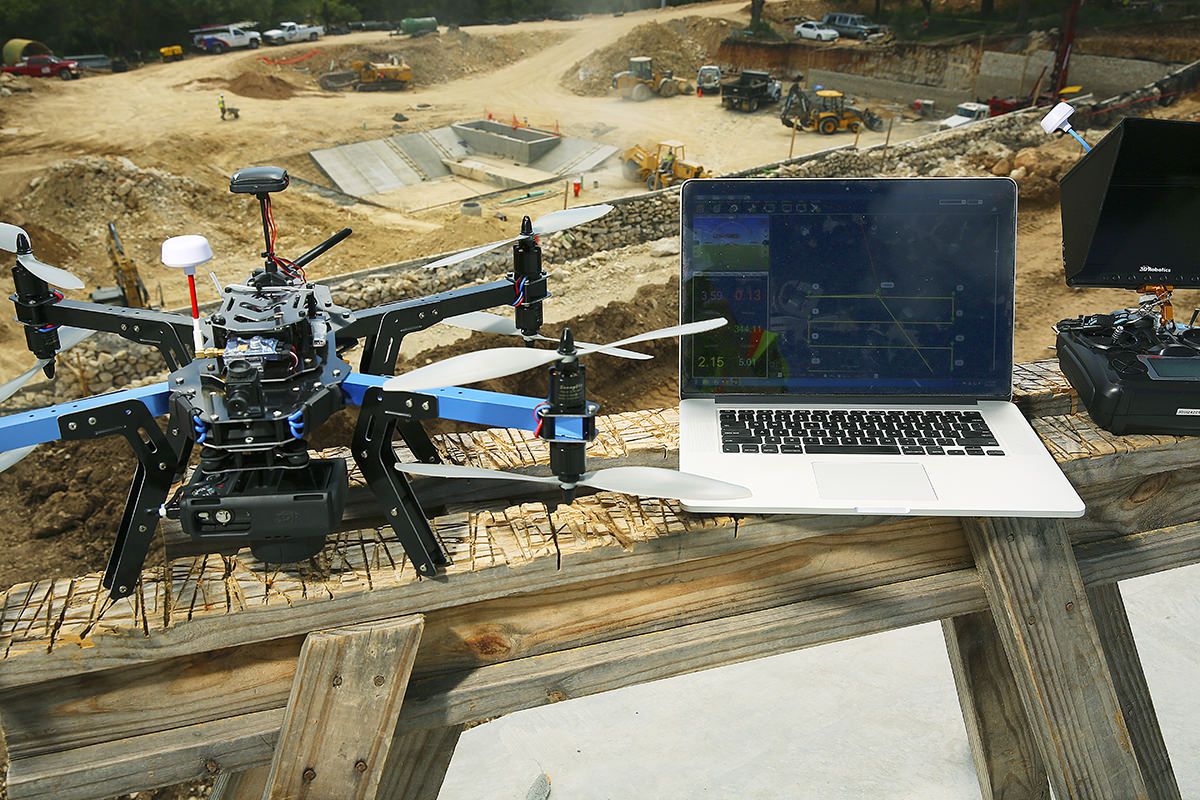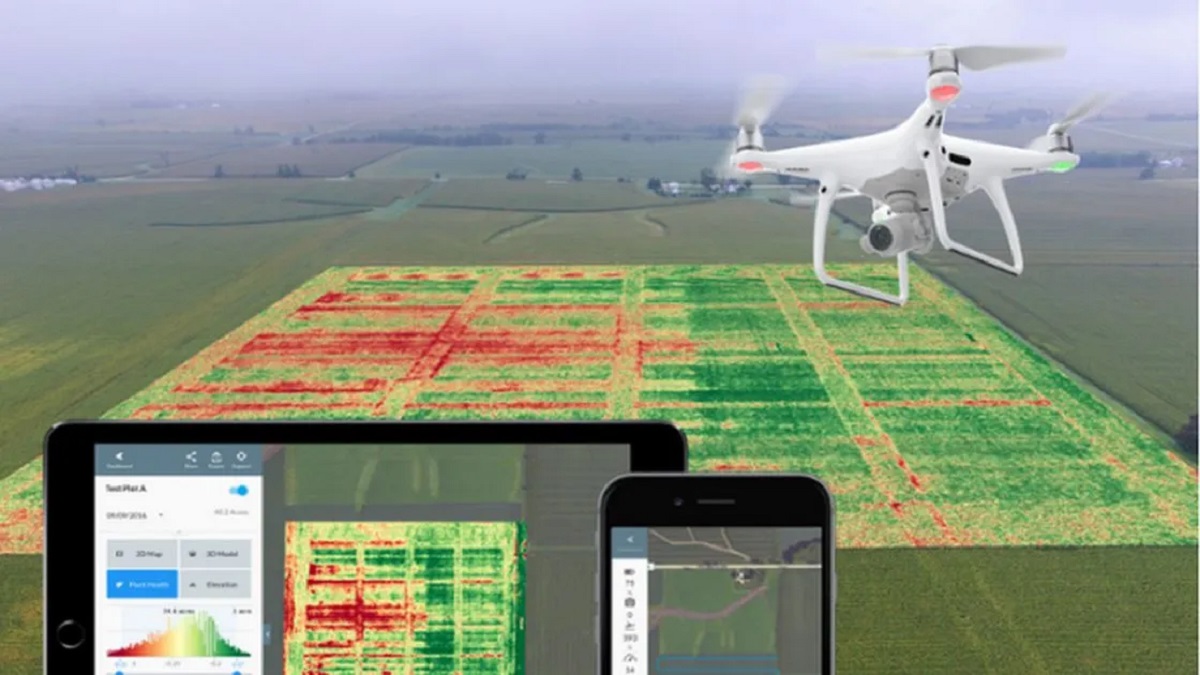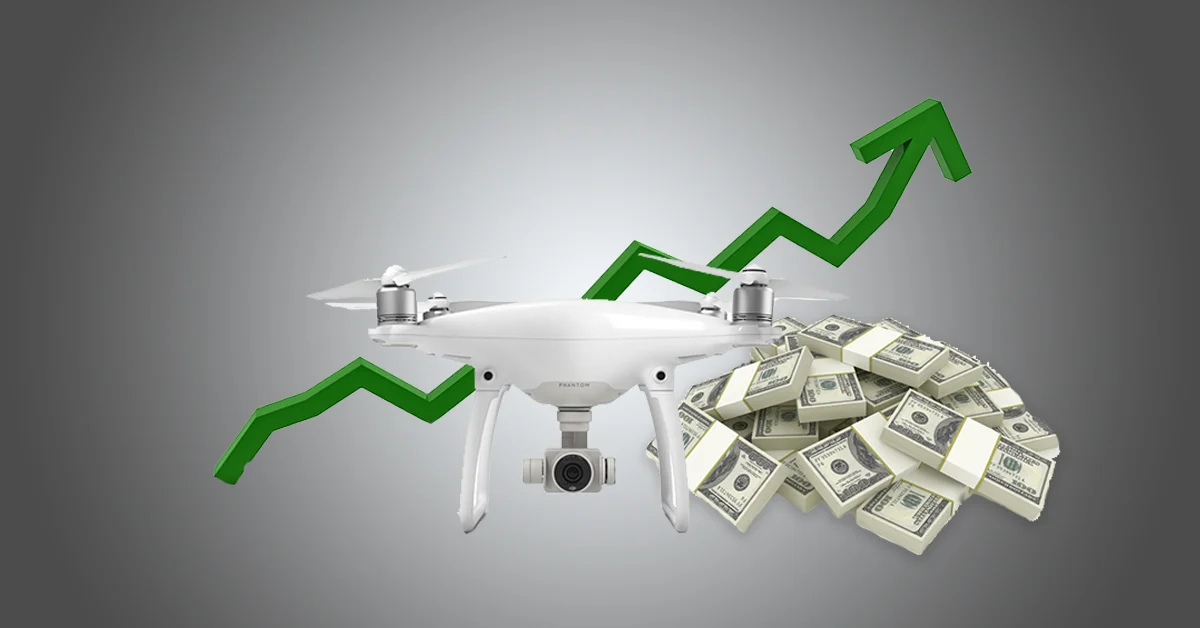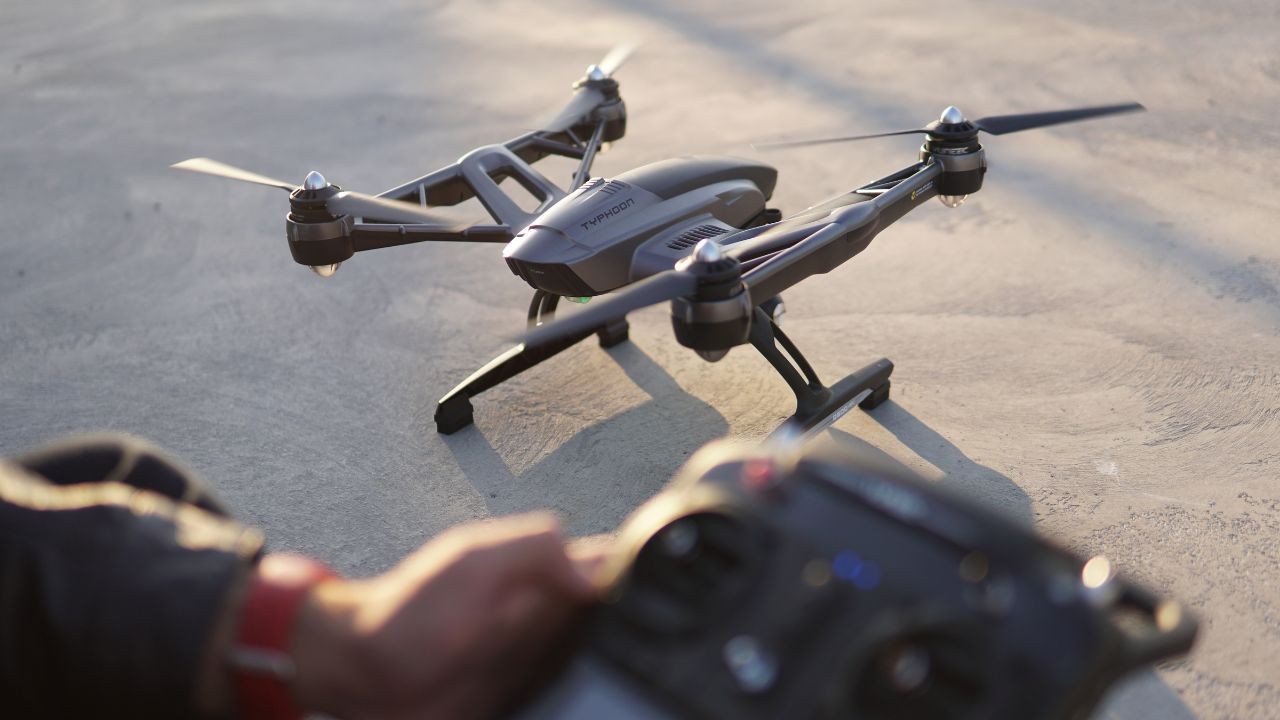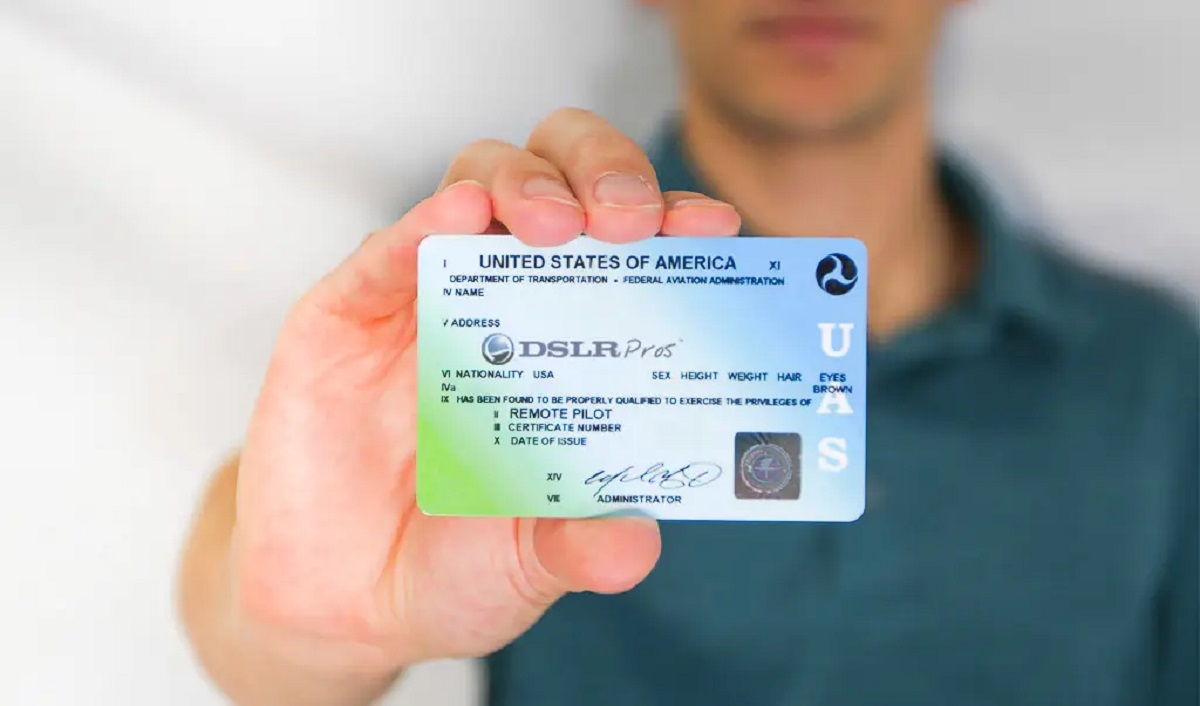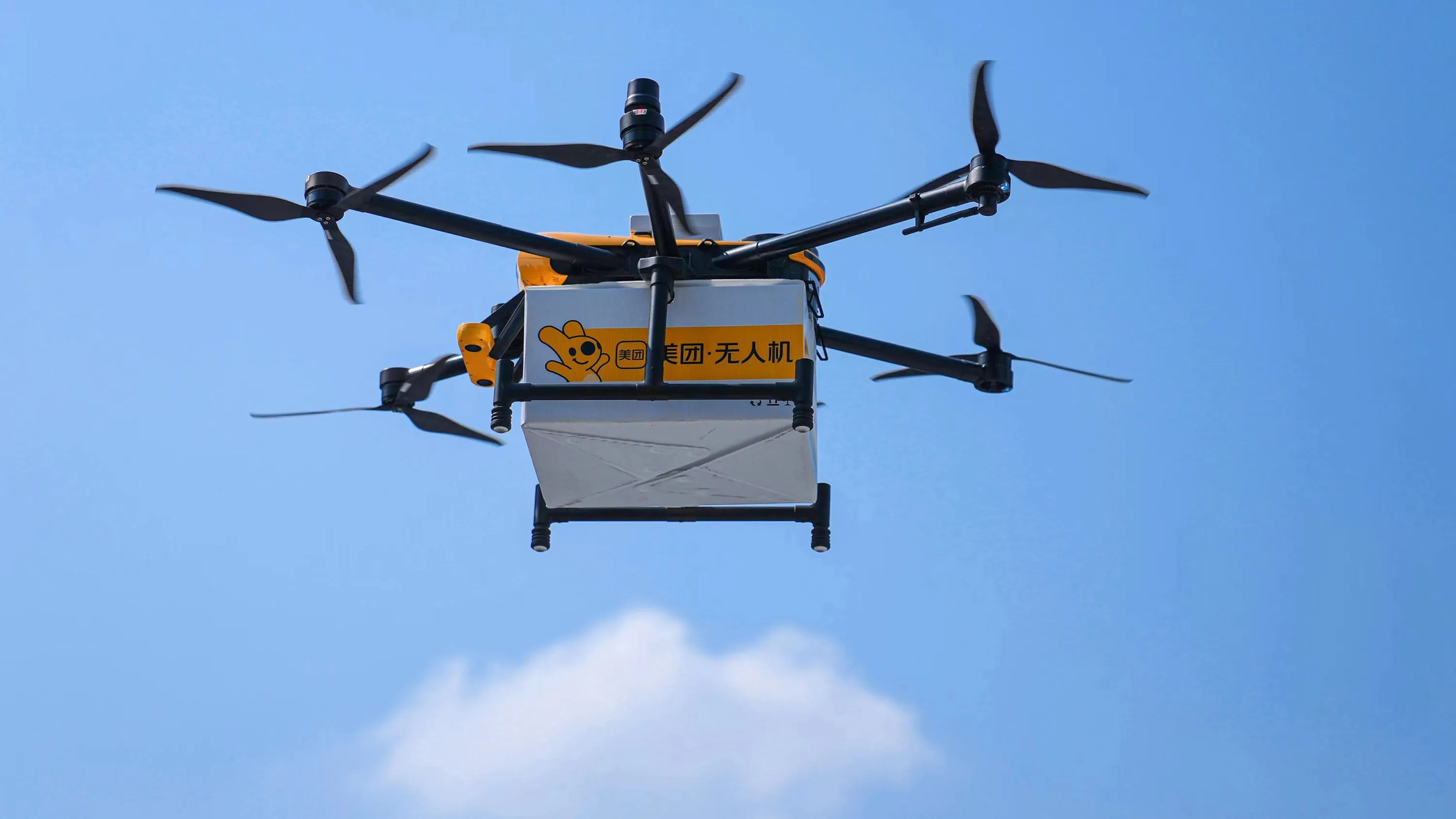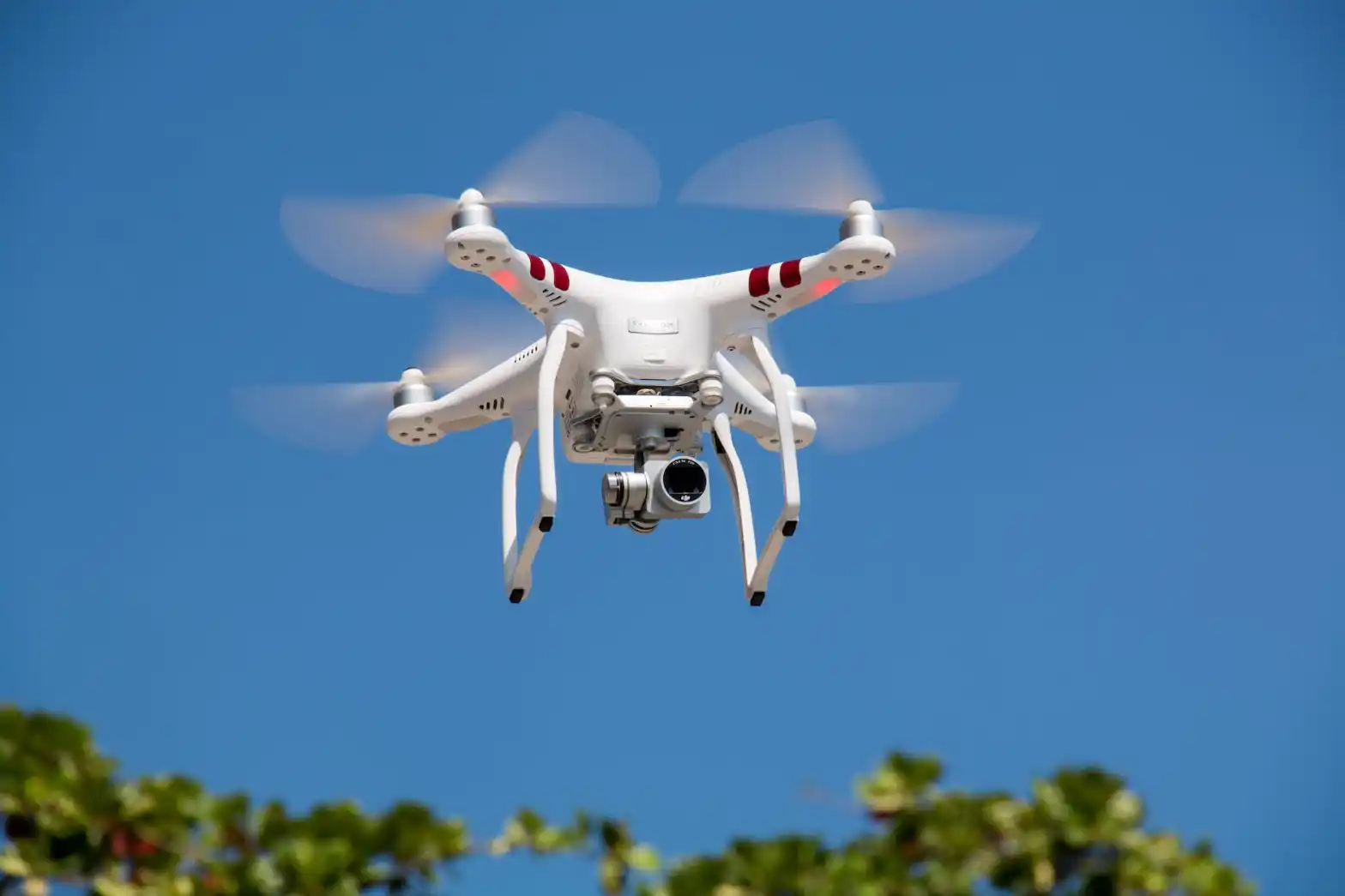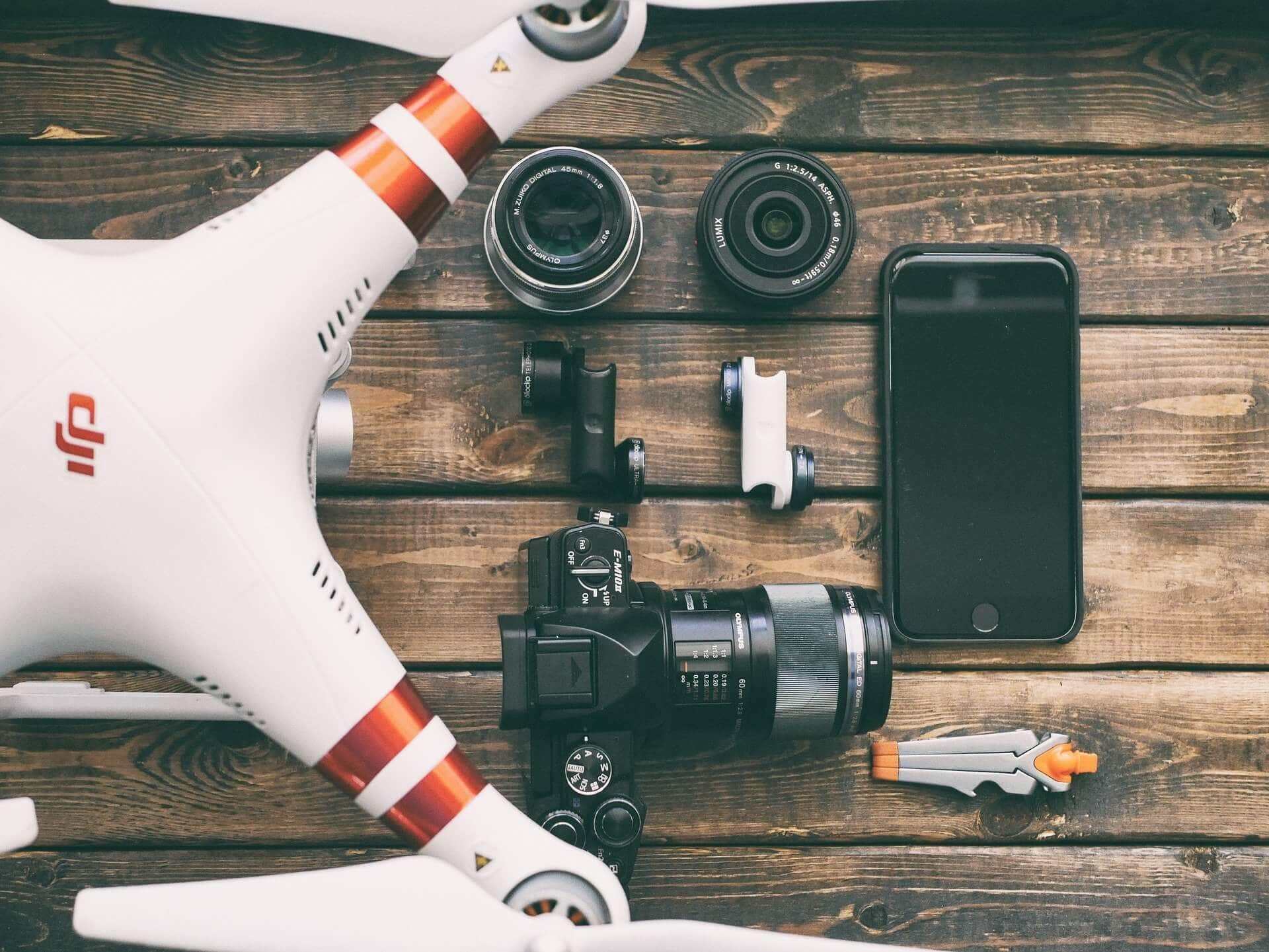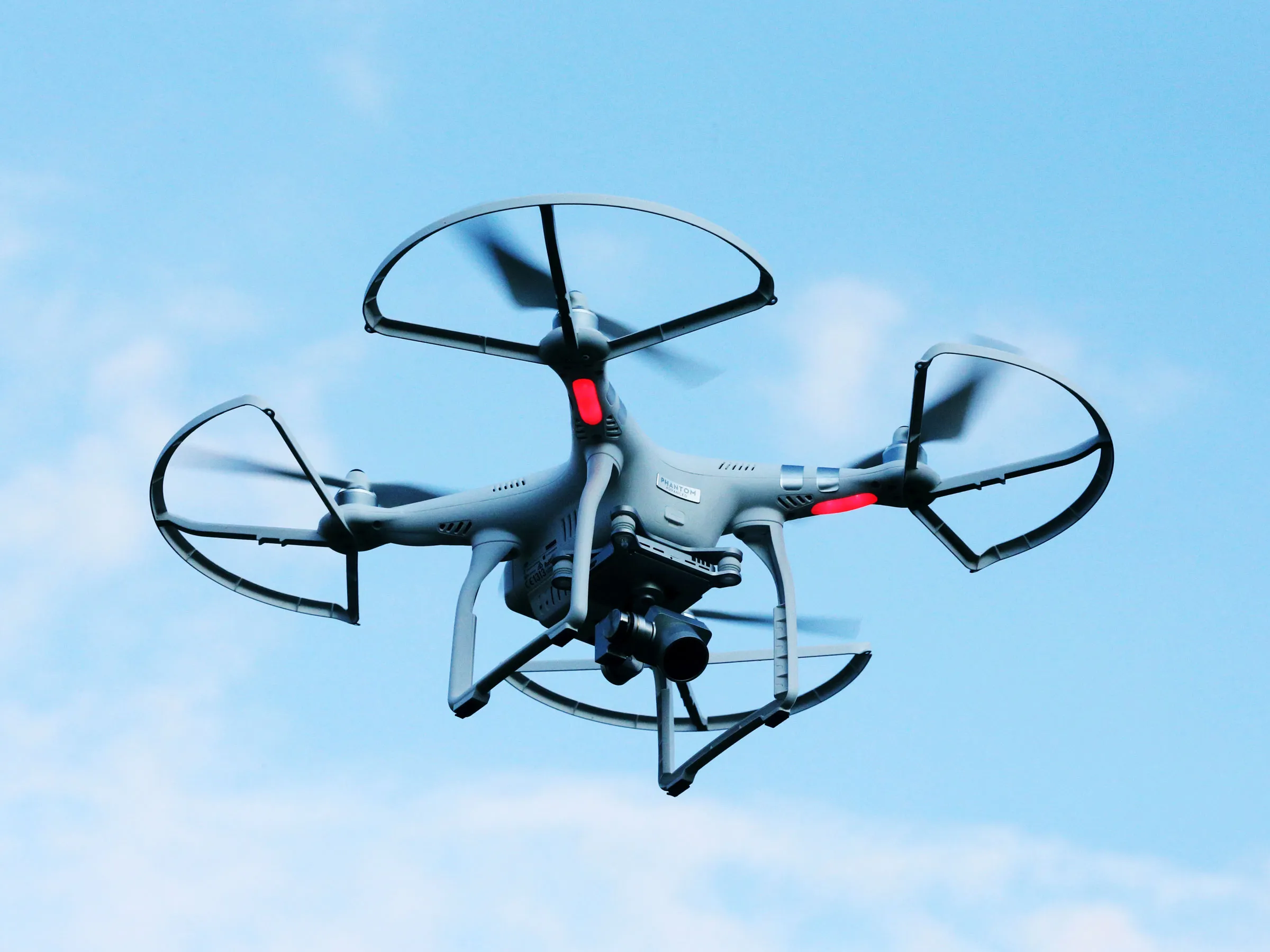Introduction
Welcome to the world of drone mapping! In today’s technological landscape, drones have become indispensable tools for various industries, including mapping and surveying. As an SEO writer, I understand the importance of creating engaging and informative content about starting a drone mapping business.
Drone mapping is the process of using drones equipped with cameras or LiDAR sensors to capture aerial imagery and data for mapping, surveying, and 3D modeling purposes. This technology provides businesses and organizations with accurate and timely geospatial information, revolutionizing traditional mapping methods.
In this article, we will dive into the intricacies of starting a drone mapping business, exploring the necessary steps, skills, equipment, and strategies for success. Whether you are an individual interested in drone technology or an entrepreneur looking to capitalize on this growing industry, this guide will provide you with the insights you need to get started.
Before we begin, it is important to note that the drone industry is regulated by various governmental bodies, and compliance with these regulations is crucial. This article will touch upon the necessary certifications and permits you need to obtain to operate your drone mapping business legally and professionally.
So, without further ado, let’s delve into the world of drone mapping and uncover the key steps to launch and run a successful drone mapping business. By the end of this article, you will have a clear understanding of how to kickstart your journey in this exciting and lucrative industry.
Understanding the Drone Mapping Business
Before diving into the nitty-gritty of starting a drone mapping business, it’s essential to have a solid understanding of the industry. Drone mapping involves the use of unmanned aerial vehicles (UAVs) equipped with advanced imaging technology to capture detailed data and create highly accurate maps and models.
One of the primary applications of drone mapping is in the field of surveying and mapping. Traditional surveying methods can be time-consuming and expensive. However, drones offer a more efficient and cost-effective solution by capturing aerial imagery that allows for precise mapping and analysis.
Drone mapping is widely used in industries such as agriculture, construction, infrastructure inspection, real estate, environmental monitoring, and more. These industries rely on accurate maps, topographic data, and 3D models to make informed decisions, improve efficiency, and mitigate risks.
With access to high-resolution aerial imagery and advanced mapping software, drone mapping businesses can provide valuable insights and deliver comprehensive mapping solutions to their clients. These solutions include orthomosaic maps, digital elevation models (DEMs), 3D point clouds, and thermal maps.
Moreover, the adoption of drone technology in the mapping industry has opened up new possibilities for data collection and analysis. Drones equipped with LiDAR sensors can capture laser-based measurements of the environment, enabling the creation of detailed 3D models and accurate volumetric calculations.
As the demand for drone mapping services continues to grow, so does the need for skilled professionals who can effectively capture, process, and interpret aerial data. This presents a significant opportunity for individuals and entrepreneurs to establish their presence in the drone mapping business.
Now that you have a better understanding of the drone mapping industry and its potential applications, let’s explore the key steps you need to take to build a successful drone mapping business. From honing your skills to finding clients and delivering top-notch services, we will cover everything you need to know to thrive in this exciting field.
Building Your Drone Mapping Skillset
Building a strong skillset is essential for success in the drone mapping business. As a drone mapping professional, you need to be proficient in both piloting drones and processing mapping data. Here are some key skills you should focus on developing:
- Drone Piloting: Mastering the art of drone piloting is crucial. Practice flying your drone in different environments and weather conditions to improve your piloting skills. Familiarize yourself with flight patterns, safety protocols, and emergency procedures to ensure safe and efficient operations.
- Navigation and Mapping Software: Get hands-on experience with navigation and mapping software. Familiarize yourself with popular mapping software platforms such as Pix4D, DroneDeploy, or Agisoft Metashape. These tools allow you to process aerial imagery and create accurate maps, 3D models, and other deliverables.
- Photography and Videography: Understanding the principles of photography and videography will help you capture high-quality imagery. Learn about composition, lighting, and camera settings to capture the best shots during your mapping missions. This will ensure that your mapping data is clear and accurate.
- Data Processing: Develop skills in processing and analyzing mapping data. This includes stitching together aerial imagery, generating orthomosaic maps, creating DEMs and point clouds, and conducting accurate volumetric calculations. Familiarize yourself with software tools that enable you to process and interpret the captured data effectively.
- GIS and Remote Sensing: Gain knowledge in Geographic Information Systems (GIS) and remote sensing techniques. Understanding how to integrate drone mapping data into existing GIS systems and analyze the data using remote sensing techniques will enhance the value you provide to your clients.
Continuously honing your drone piloting and data processing skills is essential. Stay up to date with the latest advancements in the industry and engage in professional development opportunities, such as attending workshops and conferences, to expand your knowledge and expertise.
Remember, building a strong skillset takes time and practice. Dedicate yourself to improving your drone piloting, data processing, and analytical skills. The more proficient you become in these areas, the more confident and successful you will be in providing top-notch drone mapping services to your clients.
Securing Necessary Certifications and Permits
Operating a drone mapping business requires compliance with regulatory requirements and obtaining the necessary certifications and permits. This ensures that you operate legally and maintain a high standard of safety and professionalism. Here are the key certifications and permits you need to secure:
- Remote Pilot Certificate: In the United States, if you plan to operate a drone for commercial purposes, you need to obtain a Remote Pilot Certificate issued by the Federal Aviation Administration (FAA). To earn this certificate, you must pass the FAA’s Part 107 Knowledge Test, which covers topics such as airspace regulations, drone operation, and safety protocols.
- Airworthiness Certificate: Ensure that your drone is registered with the appropriate aviation authority in your country and complies with all airworthiness requirements. This certificate confirms that your drone is safe to operate and meets the necessary standards.
- Operational Waivers: Depending on the nature of your drone mapping operations, you may need to obtain operational waivers from the aviation authority. For example, if you plan to fly your drone beyond visual line of sight (BVLOS) or in restricted airspace, you will need to request specific waivers to conduct these operations legally.
- Commercial Permits: Some countries require commercial drone operators to obtain specific permits or licenses. These permits may include additional regulations and requirements, such as insurance coverage and specific operating limitations. Familiarize yourself with the regulations in your country to ensure full compliance.
- Insurance Coverage: Protect your business and your clients by obtaining appropriate insurance coverage. Drone insurance typically includes liability coverage in case of accidents or property damage. It is crucial to have adequate insurance to mitigate potential risks and ensure a solid foundation for your business.
It’s important to note that regulations and requirements may vary from country to country, so it’s essential to research and understand the specific regulations in your region. Take the necessary steps to obtain the required certifications and permits before offering your drone mapping services to clients.
By securing the necessary certifications and permits, you demonstrate your dedication to adhering to safety standards and operating legally. This not only protects your business but also builds trust with your clients, giving them confidence in your professionalism and expertise.
Choosing the Right Mapping Equipment
Choosing the right mapping equipment is crucial for the success of your drone mapping business. The equipment you select should meet the specific requirements of your projects and deliver high-quality results. Here are the key factors to consider when choosing your mapping equipment:
- Drone: Select a drone that is suitable for mapping and surveying applications. Look for drones with a stable flight platform, good battery life, and a payload capacity that can support the necessary mapping equipment. Consider factors such as flight time, range, and ability to withstand different weather conditions.
- Camera or Sensor: The camera or sensor you choose will determine the quality and type of data you can capture. For visual mapping, a high-resolution camera with the ability to capture RAW images is essential. For more advanced applications, such as LiDAR mapping, consider sensors that can collect point cloud data for more accurate 3D modeling.
- Ground Control Points (GCPs): Depending on the accuracy requirements of your projects, consider whether you need to use Ground Control Points (GCPs). GCPs are targets placed on the ground with known coordinates that help to align and georeference your mapping data, resulting in higher accuracy.
- GNSS System: A reliable Global Navigation Satellite System (GNSS) is essential for accurate geolocation of your drone during mapping missions. Look for drones that have built-in GNSS systems or consider using external GNSS accessories for improved positioning accuracy.
- Mapping Software: Choose mapping software that is compatible with your equipment and offers the features necessary for your projects. Look for software that can process imagery, generate accurate maps and models, and provide analysis capabilities. Consider factors such as ease of use, integration with other tools, and technical support.
Additionally, consider factors such as budget, scalability, and durability when selecting your mapping equipment. Assess the needs of your target market and the types of projects you plan to undertake. This will guide you in making informed decisions about the right equipment for your business.
Keep in mind that technology is continuously evolving, so it’s essential to stay updated with the latest advancements in drone mapping equipment. Regularly evaluate your equipment and consider upgrades or additions that can enhance the quality and efficiency of your mapping operations.
By choosing the right mapping equipment, you can ensure that your drone mapping business is equipped to deliver accurate, reliable, and professional mapping services to your clients.
Finding Clients and Marketing Your Business
Once you have established your drone mapping business and have the necessary skills and equipment, it’s time to find clients and promote your services. Effective marketing and networking strategies are essential for growing your business. Here are some tips to help you find clients and market your drone mapping services:
- Identify Your Target Market: Determine the industries and sectors that can benefit most from drone mapping services. This could include agriculture, construction, real estate, infrastructure inspection, environmental monitoring, and more. Understand their specific needs and challenges to tailor your marketing approach accordingly.
- Build an Online Presence: Create a professional website, showcasing your drone mapping services, expertise, and portfolio. Optimize your website for search engines using relevant keywords to increase visibility. Leverage social media platforms to share updates, case studies, and engaging content to attract potential clients.
- Network and Collaborate: Attend industry events, trade shows, and conferences to connect with potential clients and industry professionals. Build relationships with other professionals, such as surveyors, engineers, and real estate agents, who can refer your services to their clients. Join industry associations to further expand your network.
- Create Compelling Content: Produce informative and engaging content related to drone mapping. This could include blog articles, video tutorials, or case studies that showcase the benefits of your services. Share this content on your website, social media platforms, and relevant industry forums to establish yourself as a thought leader in the field.
- Offer Competitive Pricing: Conduct market research to understand the pricing landscape for drone mapping services in your area. Price your services competitively while considering factors such as the complexity of the project, equipment costs, and your level of expertise. Consider offering package deals or discounts to attract new clients.
- Provide Excellent Customer Service: Deliver exceptional customer service to your clients. Communicate effectively, be responsive to their inquiries, and strive to exceed their expectations. Positive word-of-mouth recommendations and client testimonials can significantly boost your reputation and attract new clients.
Remember, marketing your drone mapping business is an ongoing effort. Continuously evaluate and refine your marketing strategies based on feedback and results. Stay up to date with industry trends and innovations to position your business as a leader in the field.
By effectively marketing your drone mapping services, targeting the right audience, and providing top-quality results, you can attract a steady stream of clients and grow your business.
Pricing Your Services
Determining the right pricing strategy for your drone mapping services is crucial for the success and profitability of your business. Setting your prices too high may drive away potential clients, while setting them too low may undervalue your expertise and services. Here are some factors to consider when pricing your drone mapping services:
- Project Complexity: Assess the complexity of each project. Consider factors such as the size of the area to be mapped, the required level of accuracy, and any specific client requests. More complex projects may require more time, resources, and expertise, warranting a higher price.
- Equipment and Software Costs: Calculate the costs of your drone equipment, mapping software, and any additional hardware or accessories. This includes the initial investment as well as ongoing maintenance and upgrades. Ensure that your pricing reflects these costs and provides a reasonable return on investment.
- Competitive Analysis: Research the pricing landscape in your market. Look at what other drone mapping businesses are charging for similar services. Take note of any value-added services or unique selling points they offer. Use this information to position your pricing competitively while differentiating your business.
- Time and Resources: Consider the time and resources required to complete each project. This includes flight time, data processing, analysis, and client communication. Factor in your labor costs and overhead expenses to ensure that your pricing covers your expenses and allows for a reasonable profit margin.
- Value Delivered: Think about the value your drone mapping services bring to clients. Consider the benefits they gain, such as accurate mapping data, time savings, improved decision-making, and reduced risks. Communicate the value proposition to clients to justify your pricing and emphasize the return on investment they can expect.
- Client Budgets: Take into account the budgets of your target clients. Different industries and organizations may have varying financial capacities. Tailor your pricing to align with their budgets while ensuring that it is fair and reflective of the value you provide.
Remember, pricing is not a one-size-fits-all approach. Consider these factors on a case-by-case basis and offer customized quotes based on the specific requirements of each project. Be transparent with your pricing structure and communicate the breakdown of costs to clients.
Periodically review and reassess your pricing strategy to ensure that it remains competitive and aligned with market trends. It’s essential to find a balance that allows you to cover your costs, generate a profit, and maintain long-term relationships with satisfied clients.
By carefully considering these factors and adopting a strategic approach to pricing, you can position your drone mapping services as a valuable and worthwhile investment for your clients.
Performing Effective Drone Mapping Missions
Executing effective drone mapping missions is crucial to providing accurate and high-quality mapping data for your clients. A well-executed mission ensures that you capture the required aerial imagery and collect data efficiently. Here are some key steps to perform effective drone mapping missions:
- Plan Your Mission: Before heading out to the field, thoroughly plan your mission. Identify the area to be mapped, assess any potential risks or obstacles, and determine the best flight pattern for optimal coverage. Use mapping software to design a flight plan, taking into account any specific requirements or client preferences.
- Pre-flight Checks: Prior to takeoff, conduct pre-flight checks to ensure that your drone and all equipment are in optimal working condition. Inspect the drone and camera for any physical damage, check battery levels, and calibrate the sensors. Confirm that the GPS signal is strong and that the drone is connected to the remote controller.
- Monitor Weather Conditions: Stay vigilant about the weather conditions before and during the mission. Avoid flying in strong winds, rain, or extreme temperatures that could adversely affect the drone’s performance. Monitor weather forecasts and have a backup plan in case weather conditions become unfavorable.
- Maintain Line of Sight: Keep the drone within your line of sight at all times, as required by regulations. Maintain visual contact with the drone to ensure safe and controlled flight. If necessary, position yourself in a location that allows for clear visibility of the drone throughout the mission.
- Capture High-Quality Imagery: During the flight, focus on capturing high-quality imagery. Ensure that the camera settings are optimized for the lighting conditions, and use manual exposure settings if needed. Take multiple photos with overlap to facilitate accurate mapping and data processing.
- Adhere to Safety Regulations: Comply with all safety regulations and guidelines to ensure the safety of people and property. Respect airspace restrictions and avoid flying near airports or sensitive areas. Be aware of any local regulations or permits required for specific locations.
- Data Backup: Regularly backup your captured data to prevent data loss. Use reliable storage devices or cloud-based solutions to store the data securely. Duplication and redundancy can help protect against potential hardware or software failures.
- Post-flight Data Processing: Once the mission is completed, process the captured data using mapping software. This includes stitching the imagery together, generating accurate maps and 3D models, and processing any additional data such as thermal or LiDAR data. Follow best practices for data processing to ensure optimal results.
- Quality Control and Validation: Conduct a thorough quality control check on the processed data. Validate the accuracy of the maps, models, and other deliverables to ensure they meet the required standards and match the project specifications. Double-check for any errors or discrepancies that need to be corrected before delivering the final results to the client.
By following these steps and adopting a meticulous approach to your drone mapping missions, you can ensure that you collect accurate and high-quality data for your clients. Effective mission planning, attention to detail, adherence to safety regulations, and careful data processing are all critical elements for successful drone mapping missions.
Processing and Analyzing Mapping Data
Processing and analyzing mapping data is a crucial step in transforming raw imagery into accurate and valuable information for your clients. The process involves stitching together aerial imagery, generating precise maps, creating 3D models, and conducting data analysis. Here are the key steps to effectively process and analyze mapping data:
- Data Import and Organization: Start by importing the captured data into your chosen mapping software. Organize the data in a structured manner, ensuring that each dataset is properly labeled and categorized for easy reference.
- Image Processing: Use the mapping software to process the aerial imagery. This involves aligning and merging individual images to create a seamless orthomosaic map. Adjust the color and contrast of the images, if necessary, to enhance the visual representation.
- Mapping and Model Generation: Utilize the software’s mapping capabilities to generate various products, such as orthomosaic maps, digital elevation models (DEMs), point clouds, or thermal maps. These products provide valuable insights and detailed visualizations for your clients’ specific needs.
- Data Analysis and Interpretation: Analyze the mapping data to derive meaningful information and valuable insights. Extract useful metrics, such as area calculations, distance measurements, volumetric calculations, or vegetation indices, to provide your clients with actionable data.
- Accuracy Assessment: Validate the accuracy of your mapping products and analysis results. Use ground control points (GCPs) and checkpoints to assess the accuracy of the orthomosaic map and other deliverables. Compare the mapped features to known reference data to ensure reliable results.
- Interpretation and Visualization: Interpret the mapping data and create visualizations that help clients understand the information easily. Utilize 3D modeling tools to create interactive visual representations or flythrough animations to provide a comprehensive view of the mapped area.
- Finalization and Data Delivery: Finalize the processed data by performing any necessary refinements or adjustments. Ensure that all deliverables meet the agreed-upon specifications and quality standards. Package the data in a format that is easily accessible and deliver it to your clients, either electronically or physically.
Throughout the processing and analysis stage, it’s essential to maintain data integrity and quality control. Regularly evaluate the accuracy and consistency of your results, troubleshoot any issues, and refine your processes to ensure the final outputs meet the highest standards.
Keep in mind that data processing and analysis depend on the software tools you use, and it’s crucial to stay updated with the latest advancements in mapping software. Engage in professional development opportunities to enhance your skills and knowledge in data processing techniques and industry best practices.
By diligently following these steps and employing effective data processing and analysis techniques, you can provide your clients with valuable insights and accurately derived information from the mapping data. This will enhance their decision-making processes and solidify your reputation as a skilled and reliable drone mapping professional.
Delivering Professional Drone Mapping Results
Delivering professional drone mapping results is essential to ensuring client satisfaction and building a reputable business in the industry. Your ability to provide accurate, timely, and high-quality deliverables will determine your clients’ trust in your services. Here are the key steps to deliver professional drone mapping results:
- Review and Quality Control: Before delivering the final results, conduct a thorough review and quality control check. Ensure that all data processing and analysis have been completed accurately and that the deliverables meet the agreed-upon specifications and quality standards.
- Documentation and Reports: Prepare comprehensive documentation and reports that detail the mapping process, data collection methodology, and any limitations or assumptions made during the project. This documentation provides transparency and helps clients understand the reliability and accuracy of the mapping results.
- Visualize and Present Outputs: Visualize the mapping results in a clear and understandable format for your clients. This may include presenting orthomosaic maps, 3D models, point clouds, or other visual representations that effectively convey the mapped data. Use interactive tools or software to enable clients to explore and interact with the results.
- Explain and Interpret Results: Provide clear explanations and interpretations of the mapping results to your clients. Highlight key findings, trends, or anomalies that they should be aware of. Tailor the explanations to the specific needs and understanding of the client, using non-technical language when necessary.
- Address Client Questions or Concerns: Be prepared to address any questions, concerns, or requests for clarification that clients may have regarding the mapping results. Promptly respond to their inquiries and provide additional support or explanation as needed to ensure their understanding and satisfaction.
- Provide Ongoing Support: Offer ongoing support and assistance to clients even after the delivery of the mapping results. Be available to answer any further questions, provide guidance, or offer additional services if required. Building long-term relationships with your clients will contribute to your business’s success and potentially lead to referrals.
- Solicit Feedback: Encourage clients to provide feedback on your services and their experience working with you. This feedback provides invaluable insights into areas for improvement and helps you gauge client satisfaction. Use the feedback to refine your processes and enhance the quality of your future drone mapping projects.
Remember, the professionalism and expertise you demonstrate in delivering the mapping results will contribute to your reputation in the industry. Strive for excellence in all aspects of your work, from data processing and analysis to documentation and client communication.
By consistently delivering professional drone mapping results, you will establish yourself as a trusted provider in the field and attract new clients who value accuracy, quality, and reliability in mapping services.
Managing Your Drone Mapping Business
Effective management is vital for the long-term success and growth of your drone mapping business. Proper management ensures that your operations run smoothly, your clients are satisfied, and your financial goals are met. Here are key considerations for managing your drone mapping business:
- Business Planning: Create a comprehensive business plan that outlines your goals, target market, pricing strategy, marketing plan, and financial projections. Regularly review and update your business plan to adapt to market changes and ensure you stay on track.
- Financial Management: Maintain accurate financial records and monitor your revenue, expenses, and cash flow. Use accounting software or engage an accountant to ensure compliance and to make informed financial decisions. Regularly assess the profitability of your projects and adjust your pricing if necessary.
- Client Relationship Management: Cultivate strong and long-lasting relationships with your clients. Communicate regularly, deliver on promises, and provide exceptional customer service. Aim for client satisfaction and seek feedback to continuously improve your services.
- Team Management: If you have a team, effectively manage and coordinate their efforts. Delegate tasks, provide clear instructions, and establish a collaborative work environment. Foster professional development opportunities for your team members to enhance their skills and expertise.
- Operational Efficiency: Streamline your operations to maximize efficiency and productivity. Implement tools and technologies that can automate repetitive tasks and enhance data processing. Continuously evaluate your workflow to identify areas for improvement and implement best practices.
- Risk Management: Identify and mitigate potential risks associated with drone operations. Follow safety protocols, adhere to regulations, and maintain appropriate insurance coverage. Regularly assess and address risks to ensure the safety and security of your clients, your team, and your equipment.
- Continuous Learning: Stay updated with industry trends, technological advancements, and changes in regulations. Engage in professional development opportunities such as workshops, conferences, and online courses to enhance your skills and knowledge in drone mapping and related fields.
- Maintain Equipment: Regularly maintain and calibrate your drone and equipment to ensure optimal performance. Follow manufacturer guidelines for maintenance and conduct regular checks to identify any issues that may affect your operations. Properly store and transport your equipment to prevent damage.
- Networking and Partnerships: Build a strong network within the industry by attending events, joining professional associations, and collaborating with other drone mapping professionals. Leverage partnerships and referrals to expand your client base and gain access to new opportunities.
Running a successful drone mapping business requires dedication, organization, and a focus on delivering excellent results. By effectively managing your business and continuously improving your operations, you can position yourself for growth and establish a reputable presence in the drone mapping industry.
Conclusion
Starting and running a drone mapping business requires a combination of technical skills, business acumen, and dedication. By following the steps outlined in this guide, you can position yourself for success in this rapidly evolving industry.
Understanding the intricacies of the drone mapping business is essential. From building your drone mapping skillset to securing necessary certifications and permits, each step contributes to the foundation of your business. Choosing the right mapping equipment, finding clients, and effectively marketing your services are crucial for attracting and retaining customers.
Once you have secured clients, delivering professional results is paramount. From performing effective drone mapping missions to processing and analyzing mapping data, attention to detail and accuracy are key. Managing your business effectively, including financial management, client relationships, and operational efficiency, will lay the groundwork for growth and sustainability.
Remember, the drone mapping industry is constantly evolving. It is essential to stay updated with technological advancements, industry trends, and regulatory changes. Continuous learning, networking, and investing in your professional development will help you stay ahead of the curve.
In conclusion, starting a drone mapping business offers exciting opportunities in a growing industry. With the right skills, equipment, and business strategies, you can thrive and deliver high-quality drone mapping services to clients across various sectors. Embrace the challenges and embrace the rewards of building a successful drone mapping business.







